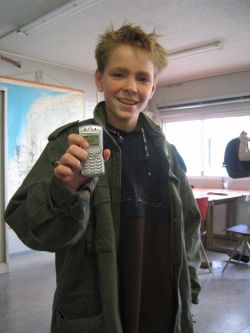Opinions on Experimental Classroom
It is a great experience to have classes in such a high tech classroom.
The best thing about this classroom is that we students are being the center of the learning process, while instructors are act as kind of facilitators during whole process. The student – centered learning is enabled of course by the ICT equipped in the experimental classroom.
1. Students are arranged to be seated into different groups, it eases the communication and discussion among group members.
2. With the provided PC, we can quickly key in opinions from different group members for documentation and later on we could use what we came up during the discussion for assignment and group works.
3. Group works are not only shared among group members, but also with the rest of the whole class. Thanks to the ICT system, each groups’ input can be displayed through the big screen so that everyone in the classroom can see the contents of group discussion and freely give quick comments on that. It is definitely a good way to learn from each other.
4. With smart control system, the lightening can be adjusted easily. When instructor would like to dry attention from students, he/she can turn off the lights and left only the big screens to be seen.
5. Though the tables are set freeze in classroom, but the chairs are moveable, students can always move around. Maybe you would have a cross discussion with your neighbors, that would be possible.
6. Except PC input, each table is also equipped with a microphone which help individual’s opinions to be passed throughout the whole class.
7. I realized there is also a visualizer on each table too, though we have not used it until now, but I am sure it is a very good ICT that is used in education when people need to present something in real, for example, students may show some of the iPhone/iPad application on his/her iPhone through the visualizer.
Things I am not sure whether good or bad
1. I personally do not see the leveling of the whole classroom help that much. It is a little bit uncomfortable when you hear somebody is talking but you cannot see his/her face. It is just different from talking through phones, you know the person is there, but without seeing him/her, you are not that convinced. It’s the same thing when instructor is lecturing, without the eye contact; it’s just missing something there. On the other hand, I believe to some extent leveling is good, but it is better to make sure the structure won’t block students’ vision.
2. If the table can be movable, that would be great; but I can see how messy it could be if the cables cannot be hidden under the table.
3. About the microphone on each table, though it is alright for us to pass around the microphone to the one and another, it is still not very convenient.
4. If the system could display the multiple video inputs at the same time, (which means we can see different screen inputs from different groups on one single screen) that would be easy for us to make comparison.
Overall, I enjoyed the classroom a lot.








